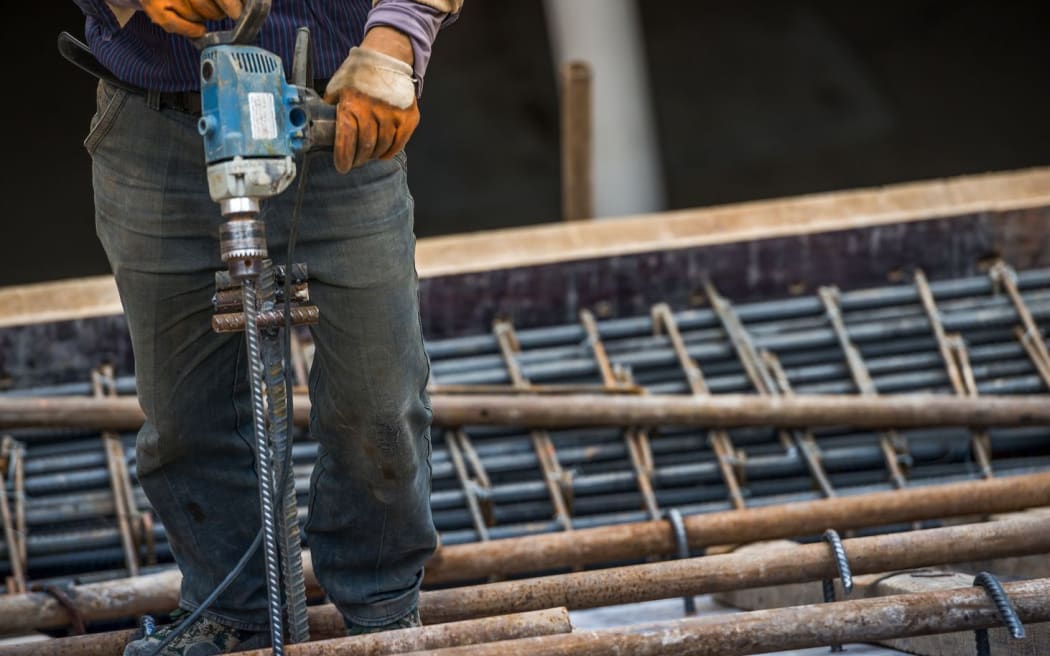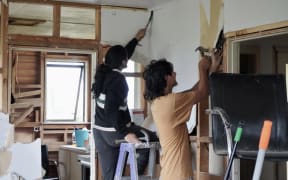
About 60 percent of apprentices were inactive last year. Photo: 123 RF
Businesses are pocketing thousands in subsidies for apprentices who gained no credits - and sector insiders say some are doing it deliberately.
Official figures show the $687 million Apprenticeship Boost scheme, which pays employers thousands of dollars a year for each new apprentice, has prompted a spike in the number of apprentices but also a spike in the percentage who complete no qualification credits each year.
In some areas of training, about 60 percent of apprentices were inactive last year, rising as high has 97 percent with relatively few apprentices in one field: electronic engineering.
Industry insiders told RNZ some employers took on apprentices or signed existing staff up for apprenticeships in order to claim government subsidies - initially worth as much as $12,000 a year - with little or no intention of actually training them.
Sector leaders say shortages of tutors and apprenticeship qualifications that involve few credits in the first year of training were also contributors.
Apprenticeship Boost started in August 2020 and the percentage of apprentices who gained no credits in a year increased from 24 percent of 53,530 apprentices in 2019 to 33 percent of 61,885 apprentices in 2020.
Last year, 36 percent of 84,275 apprentices were inactive with the percentage ranging from 67 percent in creative arts - where there were only 105 apprentices - to 17 percent in engineering, which had 26,110 apprentices.
The architecture and building field had a particularly big increase in both apprentice numbers and the percentage of inactive apprentices.
Last year, 51 percent of its 37,015 apprentices were inactive, up from 28 percent of 21,150 apprentices in 2019.
In carpentry and joinery, 57 percent of 21,615 apprentices were inactive last year - up from 29 percent of 13,575 apprentices in 2019.
Certified Builders Association chief executive Malcolm Fleming said he was surprised by the high proportion of inactive apprentices, because builders were proud of their contribution to training.
But members had told him that some firms signed people up to access the Apprenticeship Boost funding, but were not providing the training.
"There are, or are likely to be, businesses that are enrolling employees such as labourers as apprentices and then not encouraging those apprentices to work their way through the qualification. That's a practice that trade associations like ourselves frown upon and I don't hear of a lot of it occurring but I can quite imagine that it does occur," he said.
"The second one would be businesses that are just not good at supporting apprentices due to them being poor trainers or the employer not being well organised. The result is the apprentice gets discouraged, they flounder."
Fleming said another factor was that many building firms did not do the broad range of work covered by an apprenticeship, making it difficult for their trainees to complete some parts of their qualification.
Te Pūkenga's workplace training division for building and construction said the increase in apprentices achieving no credits in a year was related to an increase in the proportion of new apprentices.
"The achievement structure of these apprenticeships means that more credits are attained towards the end of the qualification. With programmes lasting four to five years, we expect to see a corresponding increase in achievement rates flow through over the next few years."
Te Pūkenga said last year 3380 of its building and construction apprentices received qualifications which was a seven percent increase on 2021, which was a 19 percent increase on 2020.
"Given the recent increase in enrolments, we expect this percentage to increase," it said.
Roofing Association chief executive Graham Moor said more could be done to ensure employers supported their apprentices.
"Part of the problem is - and we said this when they came up with free fees and Apprenticeship Boost and all that sort of thing - there should have been some work done around qualifying the employer so that it wasn't a 'get in and get a subsidised bit of labour' approach to it," he said.
The figures showed 30 percent of roof fixing apprentices were inactive last year, up from 25 percent in 2019 but similar to figures in years prior to 2019.
Moor said the Roofing Association monitored apprentices' training and encouraged its members to keep up to date, which helped keep down the percentage of inactive apprentices.
He said National Party MPs had told the construction sector before the election that they intended to keep the Apprenticeship Boost scheme, which was good news but the scheme could be improved.
"I would look at the payments being based on the credits earned ... so you incentivise them to be productive," he said.
Waihanga Ara Rau is the Workforce Development Council for the construction sector. Its chief executive, Philip Aldridge, said part of the reason for the increased percentage of inactive trainees was that there were more first-year apprentices and some apprenticeships were structured in such a way that new apprentices completed very few or no credits in their first year of training.
"A lot of the attainment happens from a credit-scoring point of view in the last six months of a four-year apprenticeship. So yes, they're meant to get some credits but they don't get that many," he said.
Aldridge said the organisation had seen no evidence that firms were abusing the system.
He said it was great that Apprenticeship Boost had encouraged more apprenticeships.
"Based on our forecasting, there's another $280 billion in infrastructure, housing and construction needed, so we do need more people to come on board and increased diversity. We do think it's a good initiative," Aldridge said.
Firms repay more than $500k
When introduced in August 2020, Apprenticeship Boost had a budget of $380m for 20 months. It paid employers $1000 a month for first-year apprentices and $500 a month for those in their second year, up to a maximum of $16,000 for 20 months of training.
The scheme was extended last year with a further $230m but the first-year rate reduced to $500 a month from August 2022 and in this year's Budget, it was extended to the end of 2024 at a cost of $77m.
In addition to paying employers, the government also pays training providers an average rate of $7300 per full-time equivalent learner enrolled with them.
The Ministry of Social Development administered the scheme.
It told RNZ 292 employers had repaid $511,125 in subsidies covering 376 apprentices since the initiative started in August 2020.
"The main reasons for repayments relate to apprentices whose active learning with their training provider is on hold, and MSD has received that information after the payment validation date, or where an apprentice has left their job but the employee, submitting the claim on behalf of the employer, may not have been aware of that fact," it said.
The ministry said it checked a random sample of 274 apprentices each month and discussed relevant cases with the Tertiary Education Commission.
The Education Ministry was in charge of the Apprenticeship Boost policy.
It said it had not received complaints about employers misusing the scheme.
The ministry said lower credit completion rates during 2022 could be attributed to lockdowns and Covid-19 illness, the rapid influx of new learners and a volatile labour market.
"Increased volatility could make it more likely for employers to take on employees without a long-term commitment," the ministry said.
The Tertiary Education Commission has been approached for comment.






